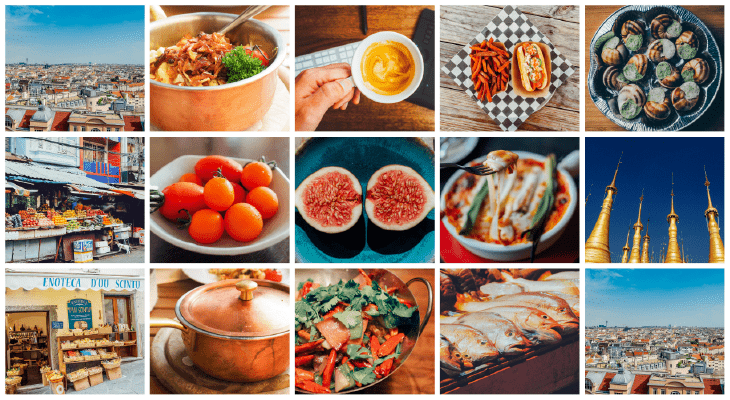Hello everyone!
Nowadays, people can do touristic activities not only for traveling but also for eating and drinking. This area, called culinary tourism, food tourism or gastronomy tourism, is developing and seems to be getting more attractive day by day, what do you think?
What is Food Tourism?
Food tourism is a newly defined type of tourism, located at the intersection of travel and food and beverage industry, although it has been intertwined for a long time.
Food tourism, in a different culinary culture from the known, can be defined as a form of tourism carried out to explore the consumption, preparation and presentation of food, cuisine, meal systems and eating styles. This concept of tourism, which seems to have emerged intentionally and with the urge to explore, is based on the perception of food culture as different from the usual and this provoking the curiosity of the individual.
Uncovered by the works of folklorists, cultural geographers, culinary historians and other social scientists; the distribution of food, consumption patterns, production methods and foods specific to special regions and human groups constitute the sources that can be taken as a basis when starting to research Food Tourism.
Food Tourism includes the subject, environment, direction and means of food. It is about individuals who have discovered new foods and who know new cultures through food, who promote their past using their food and create a marketable identity and thus satisfy their curiosity. It encompasses the power of food to try and compare foods in an extraordinary way and to make up and reconcile the difference.
The subject of food is not considered as a tourism tool or a subject belonging to tourism in the studies carried out in the field of social sciences. Food is perceived as any cultural element in tourist signs. Meals served in restaurants or festivals are among other touristic activities, and how the food and the activities around it can shape the tourist’s experience or, on the contrary, how tourism can affect food culture, society and the individual is not explored.
The concept of tourism anthropology emerged in the 1970s and has continued with the production of many theories until today. However, it is surprising that no theory produced to date has addressed the role of food in tourism. Food is a social and cultural concept as well as a psychological need and helps to illuminate tourist participation in the act of eating.
The Meaning of Food in Food Tourism
Food tourism often creates or reinforces the meaning of food. Many foods such as grapes, oranges, cherries, apples, tomatoes and wine are used as promotional symbols to attract tourists to certain areas. Foods can maintain their ethnic characteristics as well as gaining touristic characteristics because tourism helps to maintain culinary traditions, especially if tourists have the opportunity to participate in these traditions.
Eating out, trying out new recipes, attending cooking classes, buying cookbooks and magazines, is not just a nutritional motive, it also means hobby and entertainment for many people. People not only follow the traces of foreign and different foods, but also discover the food closest to their homes. Thus, all these emerging activities can be included in food tourism, because recognizing the culture-bearing characteristics of even ordinary foods can turn them into touristic attractions.
Food tourism strategies, which arise due to the interaction potential between agricultural products and tourism, constitute the main development tools to be used in regional development. The increasing expenditure on food as a part of tourism is the source of both businesses and the state showing interest in this area. The fact that food and beverage activities have been determined as the item that spends the most money after accommodation in the research is a factor that supports the importance of the subject.
Food also emerges as a determinant of identity and culture. Some foods, such as wine, are the determinants of the local culture as well as the determinant of that environment. Such a relationship is extremely important for tourism. For example, wine and its accompanying vineyards can create a strong local identity in tourism marketing. Against increasingly similar cultures, a local food and the culture related to that food are important in terms of creating differences in marketing. Food, which is an integral part of tourist experiences; It becomes an important element in tourism marketing, determines visitor satisfaction and forms an important part of tourism studies.
So what about you?
Are you one of those who travel for food?
Let me know ☺
See you in the next post.
Anıl Uzun
